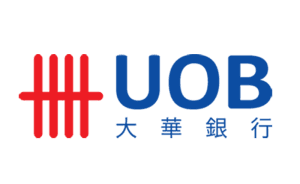China’s Golden Tax System is a country-wide VAT administration and monitoring system, first rolled out in 1994, and now in its third phase of operation. Phase IV of the Golden Tax System will likely be implemented in 2022. We discuss the expected changes in tax monitoring in China and the impact on businesses.
On September 17, 2021, at a video conference of the heads of tax authorities of the BRICS group (Brazil, Russia, India, China, South Africa), the commissioner of China’s State Taxation Administration (STA) announced the country had officially launched the construction of the Phase IV of the Golden Tax System (GTS).
China’s Golden Tax System, a nationwide value-added tax (VAT) administration and monitoring system, was originally developed in 1994 and is now operating in its third phase. The GTS Phase IV is the upgraded version of GTS Phase III and is expected to be online in 2022.
By upgrading how the Golden Tax System works, China intends to transit from “managing tax through invoice” to “managing tax through big data”. Chinese tax authorities hope to collect, integrate, and analyze tax-related data from more fields – through the GTS Phase IV mechanism. This will enable them to carry out targeted statistical analysis of data to improve tax supervision and use big data and cloud technology to better understand business activities and economic environment.
The new tax monitoring system may increase the transparency of businesses operating in China. Thus, it is vital for enterprises to understand the upcoming GTS Phase IV and brace themselves for a new era of tightening tax regulation. In this article, we explain the key new features of the GTS Phase IV and the impact on enterprises.
What is China’s Golden Tax System?
China’s Golden Tax System or GTS is a system that uses the online network of tax authorities to closely control VAT special invoices (also known as VAT special fapiao in Chinese), monitor the corporate VAT tax status, and ensure taxpayers’ compliance.
The upgradation of GTS is one of China’s national e-government projects and consists of “one network” and “four subsystems”. The “one network” is a four-level computerized taxation network of tax authorities at the national, provincial, local, and county level. The four subsystems refer to the VAT anti-counterfeiting tax control invoicing subsystem, anti-counterfeiting tax control certification subsystem, VAT auditing subsystem, and invoice co-checking subsystem.
Businesses operating in Mainland China are required to use the software of the Golden Tax System for the issuance of VAT special fapiao. The GTS system also enables VAT calculation, input VAT recognition, and the preparation and submission of tax returns.
What is the difference between China’s Golden Tax Phase III and IV?
China’s GTS Phase III is still running at present. The main breakthrough of this system is it successfully unifies and integrates the national and local taxation data – tax information of market entities can be swiftly exchanged between respective state and local tax authorities.
The upgraded GTS Phase IV will be based on GTS Phase III infrastructure but will have the following new features:
- More comprehensive monitoring of businesses – it will not only monitor tax matters, but also manage “non-tax” matters (including the collection of social insurance premiums).
- Cross-sectoral information sharing – it will build channels for information sharing and verification between ministries, commissions, banks, and other participating institutions.
- Information verification – it will be able to verify the mobile phone numbers of related personnel (such as the legal person, financial staff, and tax agents) of the enterprise, corporate tax numbers, and corporate registration information.
A closer reading of the upcoming changes
The Golden Tax System Phase IV will manage not only tax matters but also non-tax matters, especially the collection of social insurance. This is because since November 2020, China’s tax bureau has replaced the HR bureau to be solely responsible for collecting social insurance premiums from enterprise. As a result, the users of the GTS Phase IV will include not only taxpayers but also insurance contributors.
Also, the GTS Phase IV will establish information sharing channels between Tax bureau, HR bureau, market regulators, banks, and other institutions. In fact, the Chinese government has long been working on increasing cross-sectoral information sharing.
In June 2019, four central authorities – the People’s Bank of China (PBOC), the Ministry of Industry and Information Technology (MIIT), the State Administration for Market Regulation (SAMR), and the STA – jointly launched the Enterprises Information Online Verification System. The milestone system allows tax bureaus, banks, and other institutions to verify the company’s tax information and taxpayers’ business conditions through it.
It is expected that when the GTS Phase IV is online, the tax authority will be able to compare and check the authenticity of the historical tax data submitted by taxpayers through the taxpayers’ bank accounts, bank accounts of related company personnel, related account data of upstream and downstream companies, and revenue, costs, and profits of the same industry.
How will the Golden Tax System Phase IV impact enterprises?
In general, the Golden Tax System Phase IV will empower the tax authorities inspect not only invoices, but also the enterprises’ business, capital, personnel, and other data. This will make it easier for tax authorities to detect corporate tax evasion.
For example, some businesses use cash transfers from public to private accounts or from private-to-private accounts to hide some of their income. These kind of tax evasion practices may be identified by the tax authority with access to information from banks.
By incorporating the monitoring of social insurance contributions, the system will also promote enterprises to fulfill their responsibilities of paying reasonable social insurance for their employees.
On the whole, the GTS Phase IV could make it easier to spot tax irregularities by the following types of enterprises:
- Enterprises using false bank accounts
- Shell enterprises
- Enterprises with arrears of individual income tax (IIT) and social insurance premiums
- Enterprises issuing false invoices
- Enterprises with abnormal tax declaration
- Enterprises with a serious mismatch between its income and cost
- Enterprises whose inventory books do not reflect its actual inventory
- Enterprises with abnormal tax burden rates
- Perennial loss-making enterprises that do not fail
Enterprises must avoid becoming one of the above targets, which could well be inspected by the tax authority.
Preparing for the Golden Tax System Phase IV
China is determined to build a smart tax system powered by big data, cloud, and AI technologies within the next five years. Eventually, through information sharing and big data analysis, the tax bureau may be able to obtain accurate a data portrait of every enterprise and individual taxpayer.
The tax bureau’s new concept of “managing tax through data” will undoubtedly bring new challenges to the enterprises operating in China. In recent years, China’s tax authorities have achieved great progress in the use of scientific and technological tools for tax administration, especially in the management of VAT and IIT.
Although the GTS Phase IV will also need time to implement all the features, it is never too early for companies to consider seeking professional tax advice to ensure they don’t run into any problems when the GTS is upgraded.
Source: China Briefing, Written by Zoey Zhang https://www.china-briefing.com/news/chinas-golden-tax-system-phase-iv-an-explainer/






















